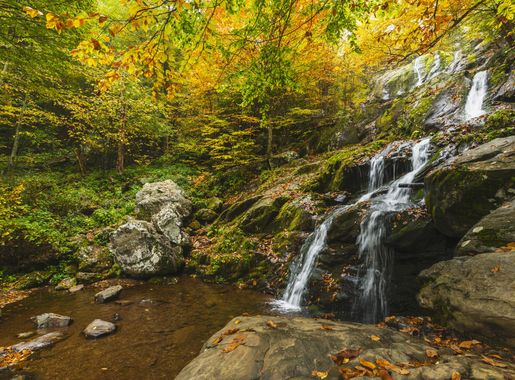
Discover the Natural Beauty of Shenandoah National Park
Immerse yourself in the breathtaking landscapes and abundant wildlife of Shenandoah National Park, Virginia's natural treasure along the Blue Ridge Mountains.
Nestled in the heart of Virginia, Shenandoah National Park is a haven for nature lovers and outdoor enthusiasts. This expansive park stretches along the Blue Ridge Mountains, offering stunning vistas, lush forests, and an abundance of wildlife. The Skyline Drive, a 105-mile scenic byway, runs the length of the park and provides breathtaking views at every turn. Hiking is one of the main attractions in Shenandoah National Park, with over 500 miles of trails to explore. From easy walks to challenging climbs, there is a trail for every level of hiker. The park is home to a section of the famous Appalachian Trail, giving visitors a chance to experience a part of this historic route. Waterfalls, streams, and rocky outcrops add to the park's picturesque landscape. Wildlife watching is another popular activity in Shenandoah. The park is home to a diverse array of animals, including black bears, white-tailed deer, and a variety of bird species. The park's diverse habitats support a rich ecosystem, making it a perfect spot for nature photography and bird watching. In the fall, the park's foliage transforms into a spectacular display of reds, oranges, and yellows, drawing visitors from near and far to witness the vibrant colors.
Local tips in Shenandoah National Park
- Visit in the fall for stunning foliage but be prepared for crowds.
- Carry plenty of water and snacks for hikes, as facilities can be sparse.
- Check the weather forecast before heading out, as conditions can change quickly.
- Pack binoculars for wildlife watching and birding.
- Stop by the visitor centers for maps, information, and tips from park rangers.
- Consider camping in one of the park's campgrounds for an immersive experience.
Discover the Natural Beauty of Shenandoah National Park
Nestled in the heart of Virginia, Shenandoah National Park is a haven for nature lovers and outdoor enthusiasts. This expansive park stretches along the Blue Ridge Mountains, offering stunning vistas, lush forests, and an abundance of wildlife. The Skyline Drive, a 105-mile scenic byway, runs the length of the park and provides breathtaking views at every turn. Hiking is one of the main attractions in Shenandoah National Park, with over 500 miles of trails to explore. From easy walks to challenging climbs, there is a trail for every level of hiker. The park is home to a section of the famous Appalachian Trail, giving visitors a chance to experience a part of this historic route. Waterfalls, streams, and rocky outcrops add to the park's picturesque landscape. Wildlife watching is another popular activity in Shenandoah. The park is home to a diverse array of animals, including black bears, white-tailed deer, and a variety of bird species. The park's diverse habitats support a rich ecosystem, making it a perfect spot for nature photography and bird watching. In the fall, the park's foliage transforms into a spectacular display of reds, oranges, and yellows, drawing visitors from near and far to witness the vibrant colors.
When is the best time to go to Shenandoah National Park?
Iconic landmarks you can’t miss
Shenandoah River State Park
Discover the breathtaking landscapes and endless outdoor activities at Shenandoah River State Park, a natural gem in Virginia's wilderness.
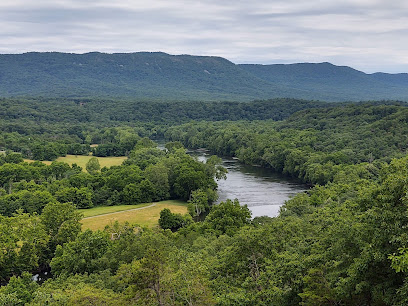
Dark Hollow Falls, Shenandoah National Park
Discover Dark Hollow Falls, a breathtaking waterfall in Shenandoah National Park, where nature's beauty and tranquility await every visitor.
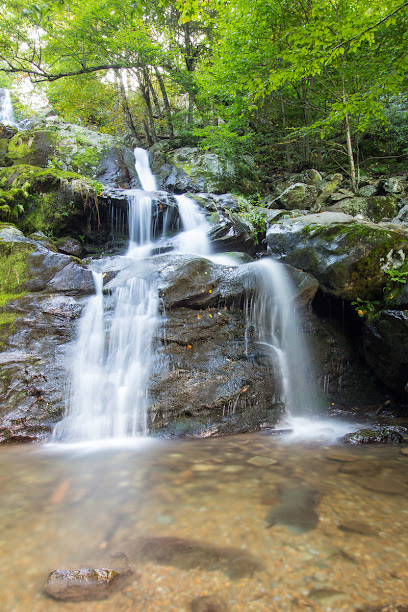
Shenandoah National Park Headquarters
Explore the breathtaking beauty of Shenandoah National Park Headquarters, a gateway to adventure amidst Virginia's stunning landscapes.
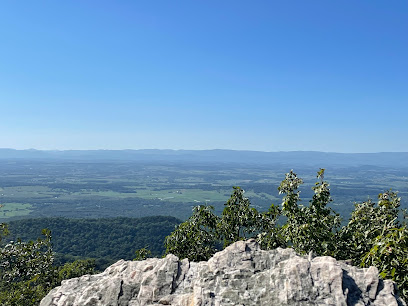
Unmissable attractions to see
Cooter's Place - Luray
Explore Cooter's Place in Luray: a fun-filled destination blending history, food, and unique shopping for all ages.
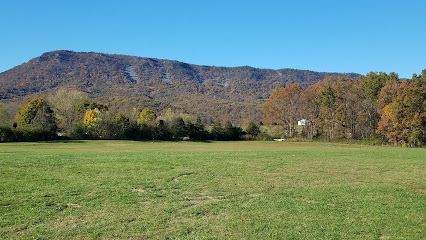
Dickey Ridge Visitor Center
Experience the beauty of Shenandoah National Park at Dickey Ridge Visitor Center, your ultimate guide to hiking and exploring nature's wonders.

Skyline Caverns
Explore the enchanting Skyline Caverns in Front Royal, Virginia, a natural wonder featuring breathtaking limestone formations and rich geological history.
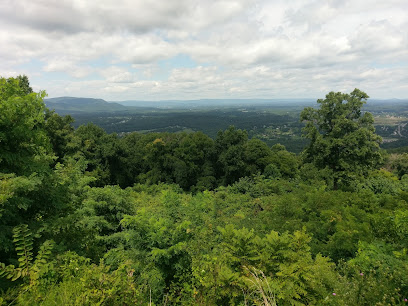
Harry F. Byrd, Sr. Visitor Center
Discover the wonders of Shenandoah National Park at the Harry F. Byrd, Sr. Visitor Center, your gateway to the scenic beauty and rich history of Virginia's mountains.
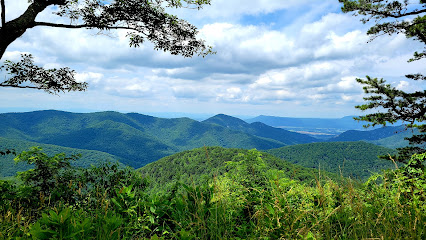
Dark Hollow Falls, Shenandoah National Park
Experience the breathtaking beauty of Dark Hollow Falls, a stunning natural treasure in Shenandoah National Park, perfect for outdoor enthusiasts and nature lovers.

Virginia Museum of the Civil War
Uncover the rich history of the Civil War at the Virginia Museum of the Civil War in New Market, VA, where the past comes alive through engaging exhibits.
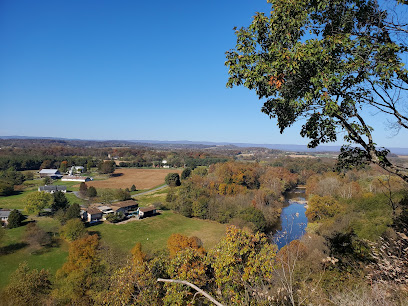
Dark Hollow Falls Trailhead
Explore the natural beauty of Dark Hollow Falls Trailhead in Shenandoah National Park, a must-visit destination for hiking enthusiasts and nature lovers.

Shenandoah Valley Overlook
Experience the stunning vistas and tranquil beauty of Shenandoah Valley Overlook, a scenic gem in Virginia's majestic landscape.
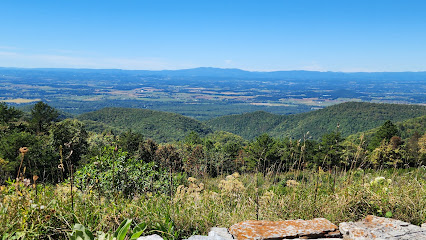
Stony Man Mountain Summit
Explore Stony Man Mountain Summit: A breathtaking hiking experience with stunning vistas and diverse wildlife in Virginia's Shenandoah National Park.
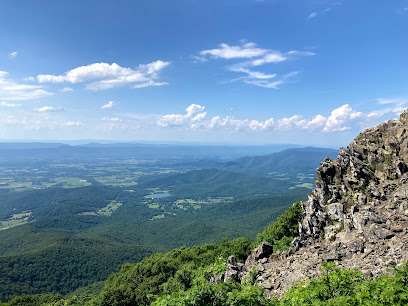
Tunnel Parking Overlook
Explore the Tunnel Parking Overlook, a scenic viewpoint on Skyline Drive in Virginia, offering stunning landscapes and a unique tunnel experience.
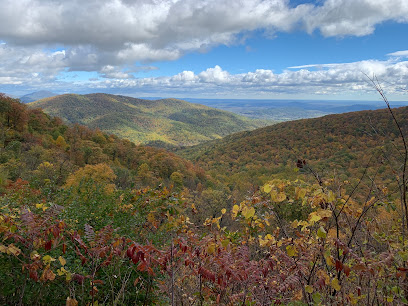
Signal Knob Overlook
Experience stunning panoramic views of the Blue Ridge Mountains at Signal Knob Overlook in Front Royal, Virginia, a must-visit scenic destination.
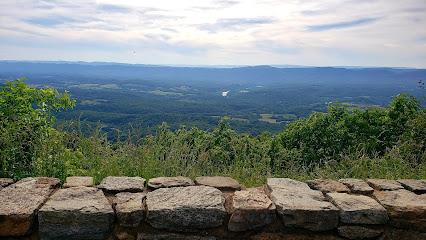
The Garden Maze at Luray Caverns
Immerse yourself in the enchanting world of The Garden Maze at Luray Caverns, a must-visit outdoor attraction for families and adventurers alike.

The Point Overlook
Discover stunning panoramic views and serene landscapes at The Point Overlook in Shenandoah National Park, a must-visit destination for nature lovers.
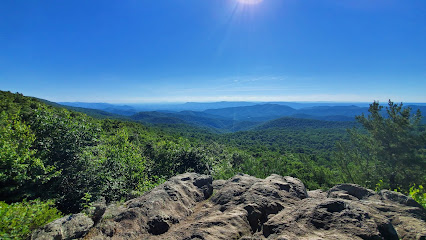
DarkWood Manor
Visit DarkWood Manor for a spine-chilling haunted house experience in Luray, Virginia, where history and ghostly tales intertwine.
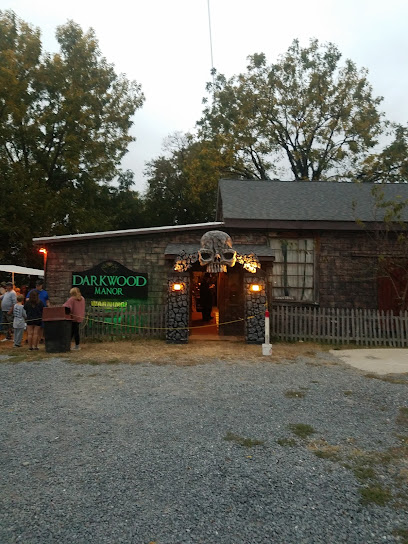
Bearfence Viewpoint Trailhead
Discover breathtaking views and adventurous hikes at Bearfence Viewpoint Trailhead in Shenandoah National Park, Virginia.

Essential places to dine
Melting Pot Pizza
Discover Melting Pot Pizza in Front Royal - where delicious flavors meet inviting ambiance for an unforgettable dining experience.
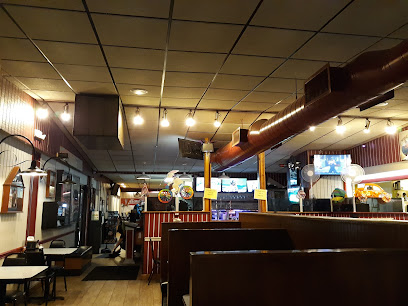
Jack Brown's Beer & Burger Joint Harrisonburg
Savor the best gourmet burgers and craft beers at Jack Brown's Beer & Burger Joint in Harrisonburg – a must-visit culinary destination.
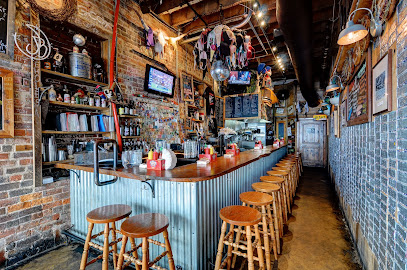
Brookside Restaurant & Cabins
Experience family-friendly dining with delicious breakfasts at Brookside Restaurant & Cabins near Shenandoah National Park.
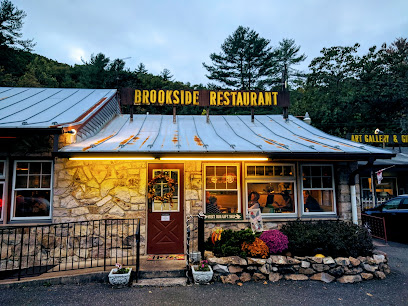
Hardee’s
Enjoy delicious burgers and fast food classics at Hardee's in charming Luray, Virginia – perfect for fueling your adventures.
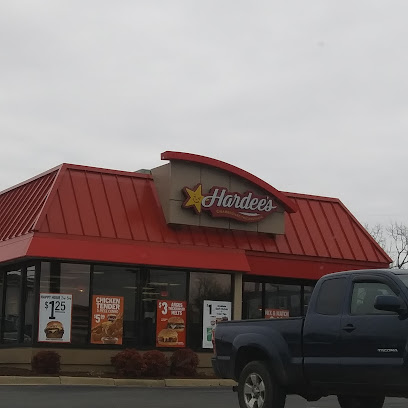
Subway
Savor fresh sandwiches at Subway in Elkton – perfect for travelers seeking quick meals with quality ingredients.
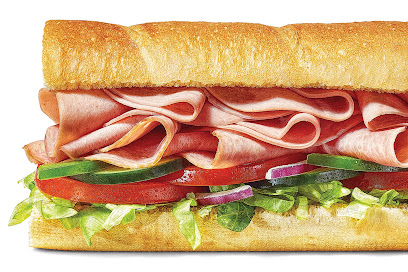
Markets, malls and hidden boutiques
Shenandoah National Park
Explore the stunning wilderness of Shenandoah National Park in Virginia, a haven for hikers, campers, and nature lovers.
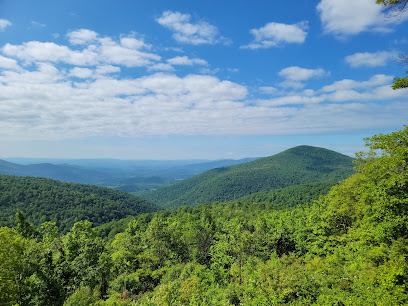
Valley Mall
Discover Valley Mall in Harrisonburg: your ultimate shopping destination with diverse stores, dining, and family-friendly fun!

Cooter's Place - Luray
Discover Cooter's Place in Luray, Virginia - a fun-filled gift shop, museum, and ice cream parlor celebrating 'The Dukes of Hazzard' with delightful offerings.
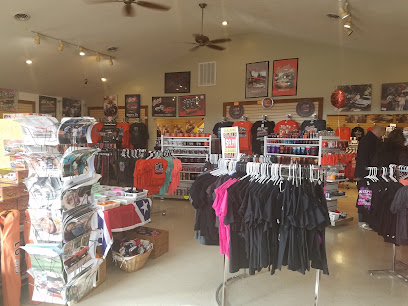
Shenandoah Caverns
Discover the enchanting underground beauty of Shenandoah Caverns, Virginia's natural wonder filled with colorful formations and adventure.
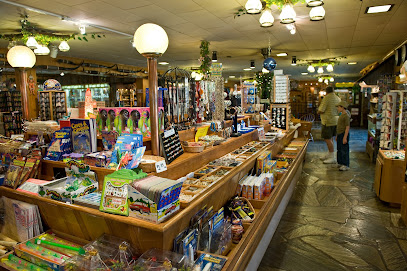
Shenandoah Heritage Market
Explore unique gifts, antiques, and local produce at Shenandoah Heritage Market in Harrisonburg, Virginia – a shopper's paradise.
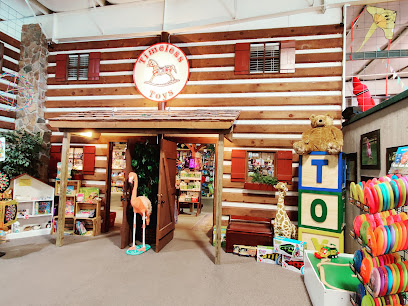
Factory Antique Mall
Explore the Factory Antique Mall in Verona, VA for a unique collection of vintage treasures, eclectic décor, and timeless collectibles that capture history.
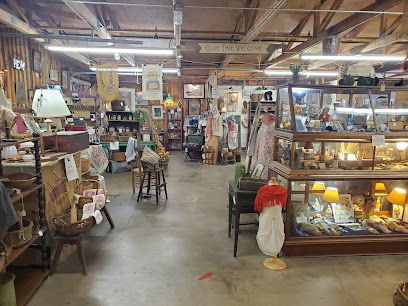
White Oak Lavender Farm & The Purple WOLF Vineyard
Discover the beauty of lavender fields and exquisite wines at White Oak Lavender Farm & The Purple WOLF Vineyard, a serene escape in Harrisonburg, VA.
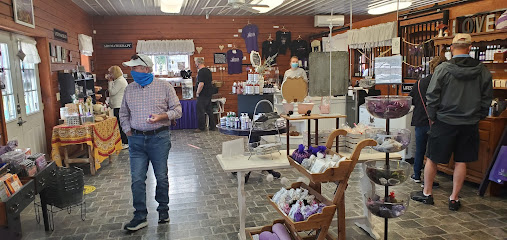
Hazel Mountain Overlook
Experience the stunning vistas and serene beauty of Hazel Mountain Overlook, a must-visit scenic spot in Luray, Virginia.
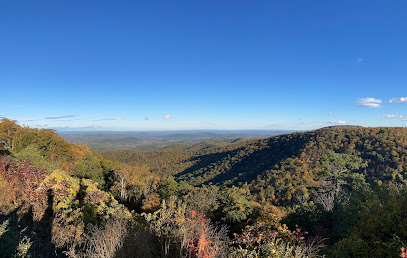
Loft Mountain Wayside
Explore Loft Mountain Wayside: A charming gift shop along Skyline Drive, offering unique local crafts and souvenirs that celebrate the Shenandoah region.
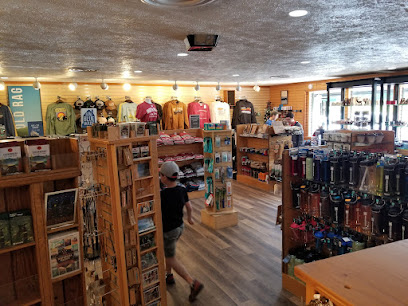
Big Meadows Wayside
Explore local treasures at Big Meadows Wayside, a charming gift shop and convenience store nestled in the scenic Shenandoah National Park.
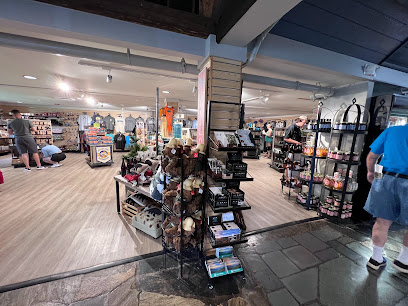
Massanutten Country Corner
Explore Massanutten Country Corner – A unique gift shop blending local produce, seasonal markets, and enchanting garden treasures in Virginia's Shenandoah Valley.
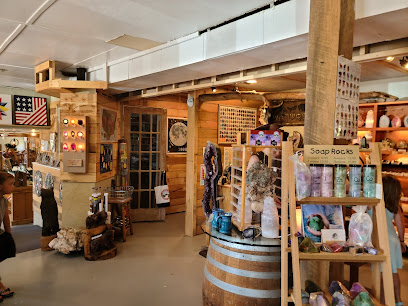
Walkabout Outfitter
Discover quality outdoor clothing and gear at Walkabout Outfitter in Harrisonburg, VA, the ultimate shop for outdoor enthusiasts and adventurers.
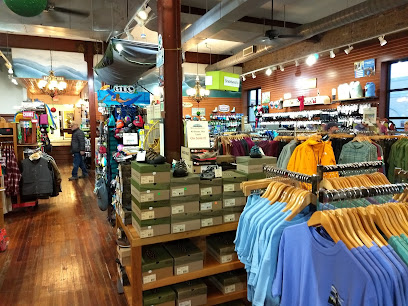
New Creation
Explore New Creation in Harrisonburg, VA - a gift shop dedicated to fair trade, unique finds, and ethical shopping practices.
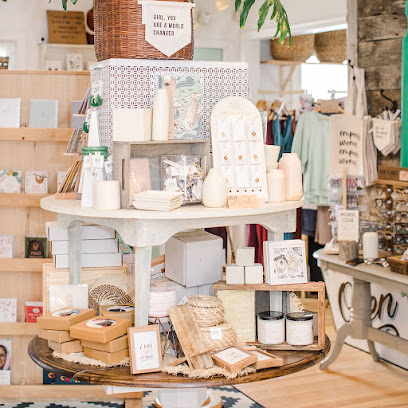
Country Road Antiques and Gifts
Explore the charm of Country Road Antiques and Gifts, where unique treasures and timeless antiques await every visitor in New Market, Virginia.
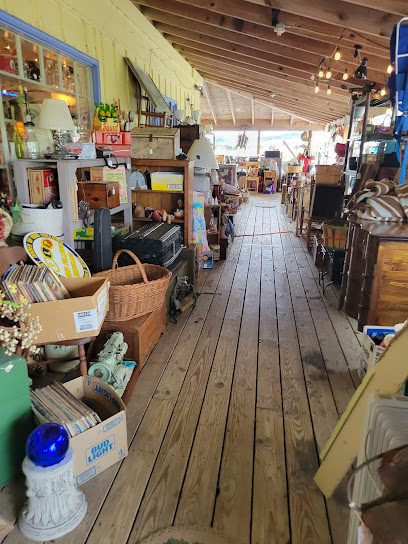
Virginia Made Shop
Discover the charm of Virginia with unique gifts and local crafts at Virginia Made Shop in Staunton, a true treasure for every tourist.
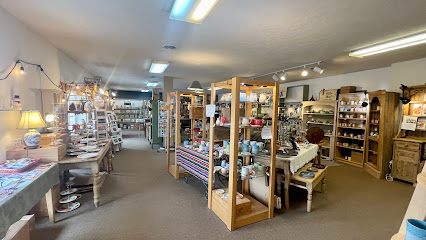
Essential bars & hidden hideouts
Hank's Grille & Catering
Discover Hank's Grille & Catering in McGaheysville, VA – a culinary haven for barbecue lovers and families seeking delicious, homemade meals.
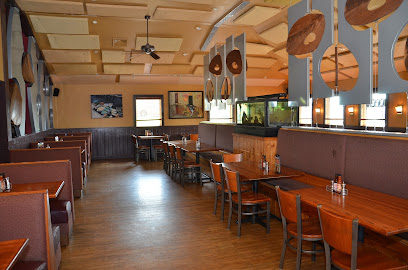
Woodstock Brewhouse
Experience the best of craft brewing and delicious cuisine at Woodstock Brewhouse, your go-to brewpub in Virginia's picturesque Shenandoah Valley.
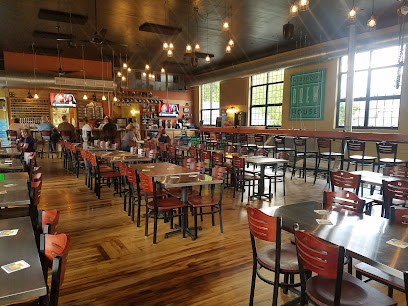
Rancho Viejo Mexican Grill & Cantina
Experience the vibrant flavors of Mexico at Rancho Viejo Mexican Grill & Cantina in Luray, VA, where every meal feels like a festive celebration.
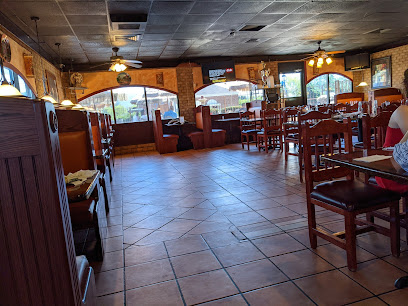
Rudy’s Diner
Discover the charm of Rudy's Diner in Shenandoah, Virginia, where delicious breakfast meets a cozy diner atmosphere.
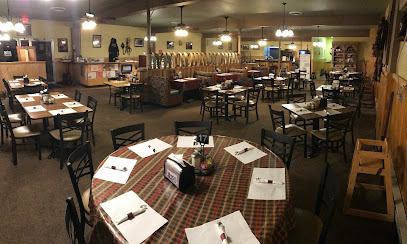
Triple Crown BBQ
Experience the authentic taste of barbecue at Triple Crown BBQ in Luray, Virginia, where smoky flavors and friendly service await.
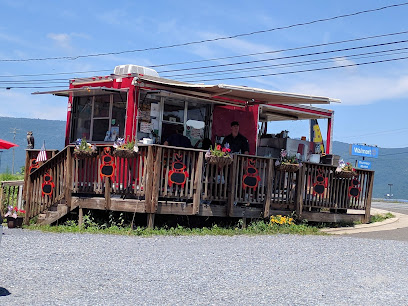
Dan's Steak House Inc.
Experience the ultimate steak dining at Dan's Steak House in Luray, VA, where every meal is a celebration of flavor and hospitality.
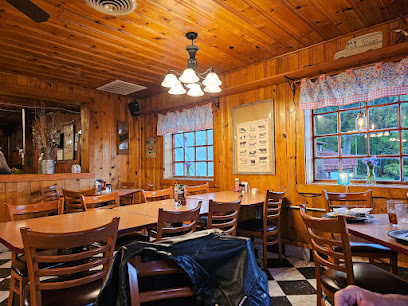
Vibrissa Beer
Discover the flavors of craft brewing at Vibrissa Beer, a top-notch brewery and brewpub in Front Royal, Virginia, with lively music and delicious food.
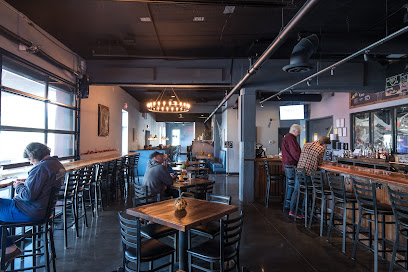
Old 33 Beer & Burger Grill, Inc.
Experience the unique flavors of Old 33 Beer & Burger Grill in Elkton, where delicious burgers meet a cozy bar atmosphere.
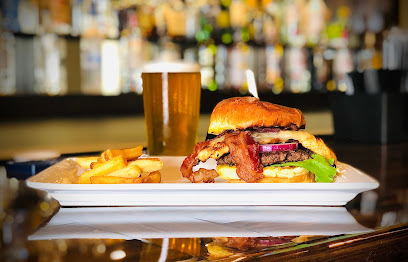
Mamma Mia Italian Restaurant
Savor authentic Italian dishes and fine wines at Mamma Mia, a top dining destination in Shenandoah, VA.
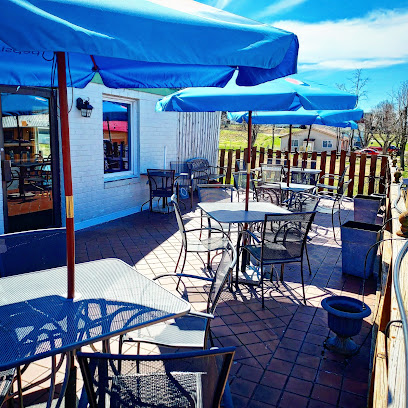
West Main Market Beer and Wine Garden
Experience the best of local cuisine at West Main Market Beer and Wine Garden in Luray, Virginia, with gourmet sandwiches and a vibrant beer garden.
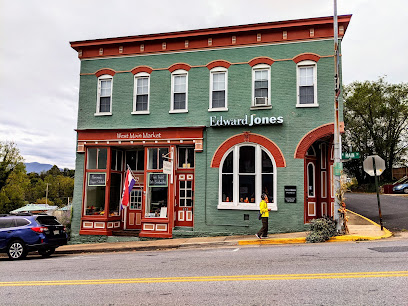
Ollie Cat Cafe
Discover the charm of Ollie Cat Cafe in Luray, VA – where delicious meals meet delightful feline companions in a cozy atmosphere.
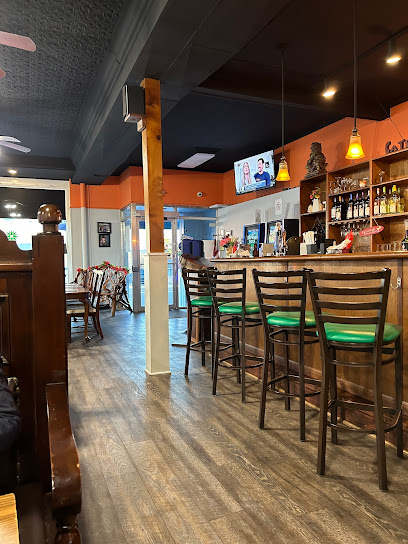
The Speakeasy Bar & Restaurant
Experience the charm of the Prohibition era at The Speakeasy Bar & Restaurant in Luray, Virginia, offering delectable dishes and crafted cocktails.
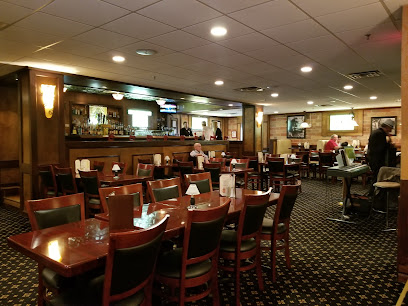
Asian Station: Luray Depot
Discover a culinary oasis in Luray, VA, with Asian Station's exquisite Asian dishes and inviting beer garden ambiance.
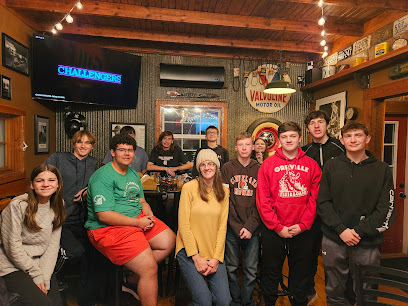
Joshua Wilton House
Explore the exquisite flavors and cozy ambiance of Joshua Wilton House, a premier dining and lodging destination in Harrisonburg, Virginia.
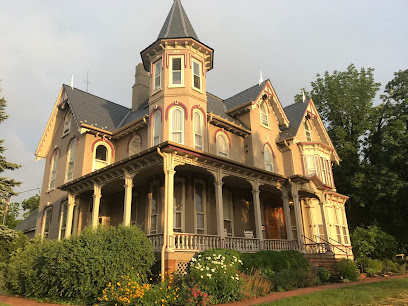
Jess' Main Street Bar and Grill
Experience the flavors of Luray at Jess' Main Street Bar and Grill, where delicious American cuisine meets warm hospitality in a cozy setting.
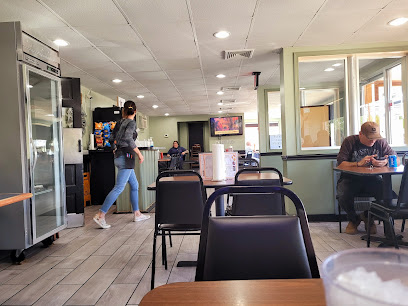
Local Phrases about Shenandoah National Park
-
- HelloHowdy
[haw-dee] - GoodbyeSo long
[soh lawng] - YesYup
[yuhp] - NoNope
[nohp] - Please/You're welcomePlease
[pleez] - Thank youMuch obliged
[muhch uh-blahy-jed] - Excuse me/SorryPardon
[pahr-dn] - How are you?Howdy?
[haw-dee] - Fine. And you?Doin' well. You?
[doh-in' wel yuh] - Do you speak English?Ya talk English?
[yah tahk ing-glish] - I don't understandI ain't gettin' ya
[ahy eynt get-tin' yuh]
- HelloHowdy
-
- I'd like to see the menu, pleaseCan I see the grub list, please
[kan ahy see thuh gruhb list pleez] - I don't eat meatI ain't dinin' on meat
[ahy eynt dahy-nin' awn meet] - Cheers!Bottoms up!
[bot-uhmz uhp] - I would like to pay, pleaseI'll settle up, please
[ahyl set-l uhp pleez]
- I'd like to see the menu, pleaseCan I see the grub list, please
-
- Help!SOS!
[ess-oh-ess] - Go away!Scram!
[skram] - Call the Police!Ring the Feds!
[ring thuh fedz] - Call a doctor!Get a doc!
[get uh dahk] - I'm lostI'm disoriented
[ahym dis-awr-ee-en-ted] - I'm illI'm under the weather
[ahym uhn-der thuh weh-thur]
- Help!SOS!
-
- I'd like to buy...I'm aimin' to purchase...
[ahym ey-min' tuh pur-chuhs...] - I'm just lookingI'm browsin'
[ahym brow-sin'] - How much is it?What's the damage?
[wuts thuh dam-ij] - That's too expensiveThat's a steep price
[thats uh steep prahys] - Can you lower the price?Can ya drop the rate?
[kan yuh drop thuh rayt]
- I'd like to buy...I'm aimin' to purchase...
-
- What time is it?What's the hour?
[wuts thuh aw-er] - It's one o'clockIt's one sharp
[its wuhn shahrp] - Half past (10)Ten thirty
[ten thur-tee] - MorningMornin'
[mawr-nin'] - AfternoonAfternoon
[af-ter-noon] - EveningEvenin'
[ee-ven-in'] - YesterdayYest'day
[yest-dey] - TodayToday
[tuh-day] - TomorrowTomorruh
[tuh-mawr-uh] - 1One
[wuhn] - 2Two
[too] - 3Three
[three] - 4Four
[fawr] - 5Five
[fahyv] - 6Six
[siks] - 7Seven
[sev-uhn] - 8Eight
[eyt] - 9Nine
[nahyn] - 10Ten
[ten]
- What time is it?What's the hour?
-
- Where's a/the...?Where's... at?
[whers at] - What's the address?What's the street?
[wuts thuh street] - Can you show me (on the map)?Can ya point it out (on the map)?
[kan yuh point it out awn thuh map] - When's the next (bus)?When's the next ride?
[whens thuh nekst ryd] - A ticket (to ....)A pass (to ....)
[ey pas tuh]
- Where's a/the...?Where's... at?
History of Shenandoah National Park
-
Long before European settlers arrived, the Shenandoah Valley and surrounding mountains were home to various Indigenous tribes, including the Siouan-speaking Manahoac and Monacan tribes. These tribes thrived in the region, utilizing its rich natural resources for hunting, fishing, and gathering. Their presence is evidenced by numerous archaeological sites, including spear points, pottery shards, and other artifacts.
-
In the early 18th century, European settlers began to explore and settle the Shenandoah Valley. Primarily of German, Scots-Irish, and English descent, these settlers established small farms and communities. They navigated the challenges of frontier life, including conflicts with Indigenous tribes, harsh winters, and rugged terrain. Remnants of these early settlements can still be found in the form of old homesteads, barns, and cemeteries scattered throughout the park.
-
The Shenandoah Valley played a crucial role during the American Civil War due to its strategic location and fertile lands. Known as the 'Breadbasket of the Confederacy,' the valley provided vital supplies to Confederate forces. The area saw numerous battles and skirmishes, including the Battle of Cedar Creek in 1864, which resulted in a decisive Union victory. Today, visitors can explore several Civil War battlefields and historical markers that commemorate these events.
-
The idea for Shenandoah National Park was conceived in the early 20th century, amidst a growing conservation movement. Advocates like George Freeman Pollock and President Herbert Hoover supported the establishment of a national park in the eastern United States. In 1935, Shenandoah National Park was officially established, encompassing over 200,000 acres of the Blue Ridge Mountains. The park's creation involved the displacement of many mountain families, a controversial aspect of its history that remains a topic of discussion.
-
One of the most iconic features of Shenandoah National Park is Skyline Drive, a scenic roadway that runs 105 miles along the crest of the Blue Ridge Mountains. Constructed during the Great Depression, Skyline Drive was a project of the Civilian Conservation Corps (CCC), a New Deal program that provided jobs and training for young men. The CCC also built many of the park's trails, campgrounds, and facilities, leaving a lasting legacy on the landscape. Today, Skyline Drive offers breathtaking views and access to numerous hiking trails.
-
Shenandoah National Park is rich in cultural heritage and folklore, much of which is rooted in the traditions of the mountain communities that once inhabited the region. Stories of moonshiners, herbal healers, and Appalachian music traditions are interwoven with the park's history. Visitors can learn about this cultural heritage through interpretive programs, exhibits, and events held throughout the year, such as traditional music performances and storytelling sessions.
-
Since its establishment, Shenandoah National Park has been the focus of ongoing conservation efforts aimed at preserving its natural beauty and biodiversity. Initiatives include habitat restoration, wildlife protection, and the management of invasive species. The park has also embraced modern developments, such as the introduction of eco-friendly facilities and programs to promote sustainable tourism. These efforts ensure that Shenandoah National Park remains a cherished destination for future generations.
Shenandoah National Park Essentials
-
Shenandoah National Park is located in the Blue Ridge Mountains of Virginia. The nearest major airports are Washington Dulles International Airport (IAD) and Charlottesville-Albemarle Airport (CHO). From Washington D.C., the park is about a 75-mile drive, which takes around 1.5 to 2 hours via I-66 West and US-340 South. From Charlottesville, the park is approximately a 30-mile drive, taking about 45 minutes via US-29 North and US-33 West. For those using public transportation, Amtrak offers train services to Charlottesville, from where you can rent a car or use a shuttle service to reach the park.
-
Once inside Shenandoah National Park, the primary mode of transportation is by car. Skyline Drive, the park's main road, runs 105 miles from end to end and offers numerous scenic overlooks, trailheads, and picnic areas. For those without a vehicle, the park offers a shuttle service during peak seasons. Bicycling is also an option, although the terrain can be challenging. Hiking is the best way to explore the park's interior, with over 500 miles of trails available.
-
The official currency in the United States is the US Dollar (USD). Major credit and debit cards are widely accepted at park entry points, visitor centers, lodges, and most shops within the park. However, it's advisable to carry some cash, especially for smaller establishments, campgrounds, and rural stops outside the park. ATMs are available at some visitor centers and nearby towns.
-
Shenandoah National Park is generally safe for visitors, but standard precautions should be taken. Be aware of your surroundings, especially in remote areas. Lock your car and secure valuables when leaving your vehicle. The park is a natural environment, so be cautious of wildlife and always stay on marked trails. There are no specific high-crime areas targeting tourists, but basic vigilance is always recommended.
-
In case of emergency, dial 911 for immediate assistance. For non-urgent issues, park rangers can be contacted at any visitor center or by calling the park's emergency line at (800) 732-0911. Medical facilities are available in nearby towns such as Front Royal, Luray, and Charlottesville. It's recommended to have travel insurance that covers medical emergencies. Always carry a first aid kit, especially if planning long hikes.
-
Fashion: Do wear comfortable, weather-appropriate clothing and sturdy hiking boots. Layers are advisable due to variable weather conditions. Avoid wearing flip-flops or open-toed shoes on trails. Religion: Do respect any religious or cultural sites you may encounter. Public Transport: Do plan ahead if relying on shuttle services, as they may not run year-round. Make sure to check current schedules. Greetings: Do greet fellow hikers and park staff with a friendly nod or 'hello.' Eating & Drinking: Do bring your own snacks and water, as services can be limited. Don't leave any trash behind—practice Leave No Trace principles.
-
To experience Shenandoah National Park like a local, start your day early to catch the sunrise from one of the scenic overlooks. Visit in the fall to witness the spectacular foliage. For a less crowded experience, explore the park's southern section. Eat at local diners and restaurants in nearby towns for a taste of regional cuisine. Don't miss hiking to Old Rag Mountain and Hawksbill Mountain for some of the best views.
Nearby Cities to Shenandoah National Park
-
Things To Do in Charlottesville
-
Things To Do in Staunton
-
Things To Do in Harper's Ferry
-
Things To Do in Martinsburg
-
Things To Do in Bethesda
-
Things To Do in Elkins
-
Things To Do in Rockville
-
Things To Do in Gaithersburg
-
Things To Do in Lynchburg
-
Things To Do in Waldorf
-
Things To Do in Silver Spring
-
Things To Do in Richmond
-
Things To Do in Frederick
-
Things To Do in Hagerstown
-
Things To Do in Laurel



